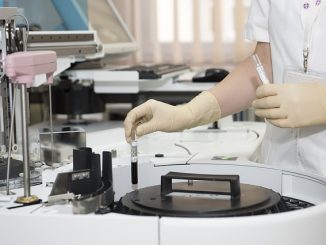
What are the first physical devices that were part of the Internet of Things (IoT)?
According to Intel, Automated Teller Machines (ATMs) went online for the first time back in 1974.
Computers and modems followed next when the World Wide Web was launched in 1991.
Then, in 2000, smart power meters were the next batch of devices to follow with their capability to communicate remotely with electrical grids.
Today, billions of devices and machines are part of the IoT world including smartphones, smart watches, smart thermostats, smart refrigerators, and even smart coffeemakers.
Nowadays, a smart fridge can tell you run out of milk and other food stuff so you’ll be reminded to shop.
Your smart coffeemaker knows the perfect time to prepare you a cup, whether to boost your energy or simply to boost your mood.
Smart clothes are also becoming a very popular trend with shirts and suits now able to help monitor your vitals and physical well-being.
By the way, IoT’s biggest impact is on business, manufacturing and healthcare. The system of connecting any device with an on and off switch to the Internet is expected to grow to more than $6 Trillion by 2025.
What mesmerizes the world about IoT?
Well, the Internet of Things does make life and work very convenient. At home, your devices and appliances prepare your breakfast and gently remind you of things you’d have to accomplish before leaving home. You’re even informed of all your appointments and activities for the day.
Going out, your car effectively deals with congested traffic and gets you to your appointment on time by selecting the best route.
At work, more analytic devices help your company monitor robotic machineries and equipment. Communication and business transactions are also faster and more efficient with Web Real-Time Communication (WebRTC), big data, and machine-learning algorithms. Augmented Reality and 3D printing are also very useful since these can facilitate prototype production and provide great ideas for innovation.
In precision agriculture, IoT tools help to increase quantity, quality, sustainability, and cost-effectiveness of production.
In IoT medicine, the technology is helping and saving many lives through sensors, activity trackers, and other systems that provide data on a patient’s lifestyle before and after treatment, disease symptom information, disease impact, glucose levels, coagulation frequency, and other vital information.
Today, there are already more than 4 billion devices and machines connected to the internet. And by 2024 the number is expected to reach 27 billion!
But, this pertains only to machine-to-machine connections. Imagine what could happen when the human brain turns into an IoT node on the World Wide Web!
In fact, a team of biomedical engineers at the Wits University in Johannesburg, South Africa have done just that by discovering a way of connecting the human brain to the internet in real time.
Through a project entitled “Brainternet,” the researchers succeeded to live stream brainwaves onto the internet with the use of a powered, mobile, internet-accessible Emotiv EEG device. Emotiv transmitted the brainwave signals from a user’s head to a Raspberry Pi, which sent it live stream to an application programming interface. The data then got displayed on a website, where people could view the Emotiv user’s brain activity.
“Brainternet is a new frontier in brain-computer interface systems,” said Adam Pantanowitz, a lecturer in the Wits School of Electrical and Information Engineering and the Brainternet’s supervisor. According to him, we’re presently lacking in easily-comprehensible data about the mechanics of the human brain and how it processes information. The Brainternet project aims “to simplify a person’s understanding of their own brain and the brains of others.”
“Ultimately, we’re aiming to enable interactivity between the user and their brain so that the user can provide a stimulus and see the response,” added Pantanowitz, noting that “Brainternet can be further improved to classify recordings through a smart phone app that will provide data for a machine-learning algorithm. In future, there could be information transferred in both directions – inputs and outputs to the brain.”
Will the human brain really become an IoT node on the Web?
If that really were to happen it would be a major technological achievement, as we could have the ability to control machines—and even each other—with our minds.
That said, the fact is that at the moment, IoT has some serious issues that must be addressed first. Hacking is one of the cyberworld’s perennial problems and concerns about IoT privacy, and security issues keep on increasing. Sure, it’s a great thing to have a smart home, smart car, and smart wearables — but is the world really ready for a full-blown IoT revolution?
Well, we better be. It is unavoidable at this point when looking at the exponential pattern of technological innovations.
- Bulenox: Get 45% to 91% OFF ... Use Discount Code: UNO
- Risk Our Money Not Yours | Get 50% to 90% OFF ... Use Discount Code: MMBVBKSM
Disclaimer: This page contains affiliate links. If you choose to make a purchase after clicking a link, we may receive a commission at no additional cost to you. Thank you for your support!




Leave a Reply